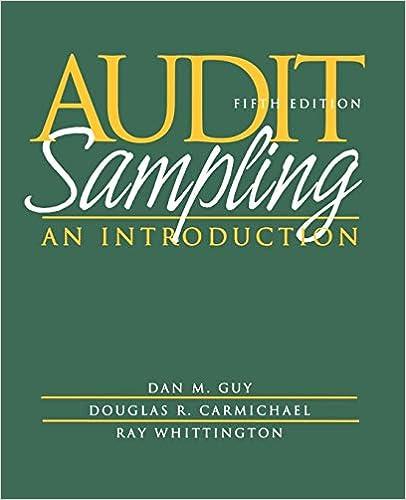Question
Haliburton Mills Inc. is a large producer of mens and womens clothing. The company uses standard costs for all of its products. The standard costs
Haliburton Mills Inc. is a large producer of mens and womens clothing. The company uses standard costs for all of its products. The standard costs and actual costs for a recent period are given below for one of the companys product lines (per unit of product):
| Standard Cost | Actual Cost | |||||
| Direct materials: | ||||||
| Standard: 2.5 metres at $5.20 per metre | $ | 13.00 | ||||
| Actual: 2.9 metres at $5.00 per metre | $ | 14.50 | ||||
| Direct labour: | ||||||
| Standard: 1.6 hours at $3.00 per hour | 4.80 | |||||
| Actual: 1.2 hours at $3.35 per hour | 4.02 | |||||
| Variable manufacturing overhead: | ||||||
| Standard: 1.6 hours at $1.40 per hour | 2.24 | |||||
| Actual: 1.2 hours at $1.90 per hour | 2.28 | |||||
| Fixed manufacturing overhead: | ||||||
| Standard: 1.6 hours at $4.60 per hour | 7.36 | |||||
| Actual: 1.2 hours at $4.65 per hour | 5.58 | |||||
| Total cost per unit | $ | 27.40 | $ | 26.38 | ||
| Actual costs: 8,000 units at $26.38 | $ | 211,040 |
| Standard costs: 8,000 units at $27.40 | 219,200 | |
| Difference in costfavourable | $ | 8,160 |
During this period, the company produced 8,000 units of product. A comparison of standard and actual costs for the period on a total cost basis is also given above.
There was no inventory of materials on hand to start the period. During the period, 23,200 metres of materials was purchased and used in production. The denominator level of activity for the period was 9,740 hours.
Required:
1. For direct materials:
a. Compute the price and quantity variances for the period. (Indicate the effect of each variance by selecting "F" for favourable, "U" for unfavourable, and "None" for no effect (i.e., zero variance).
b. Prepare journal entries to record all activity relating to direct materials for the period.
A- RECORD MATERIALS PRICE VARIANCE
B-RECORD MATERIALS QUANTITY VARIANCE
2. For direct labour:
a. Compute the rate and efficiency variances. (Indicate the effect of variance by selecting "F" for favourable, "U" for unfavourable, and "None" for no effect (i.e., zero variance).)
b. Prepare a journal entry to record the incurrence of direct labour cost for the period. (List debit entries first).
- Record the incurrence of direct labour cost for the period.
3. Compute the variable manufacturing overhead spending and efficiency variances. (Indicate the effect of each variance by selecting "F" for favourable, "U" for unfavourable, and "None" for no effect (i.e., zero variance).)
4. Compute the fixed overhead budget and volume variances. (Indicate the effect of variance by selecting "F" for favourable, "U" for unfavourable, and "None" for no effect (i.e., zero variance).)
Step by Step Solution
There are 3 Steps involved in it
Step: 1

Get Instant Access to Expert-Tailored Solutions
See step-by-step solutions with expert insights and AI powered tools for academic success
Step: 2

Step: 3

Ace Your Homework with AI
Get the answers you need in no time with our AI-driven, step-by-step assistance
Get Started


